#building information modelling
Explore tagged Tumblr posts
Text
Scan to BIM Explained: How It Helps Small Projects Succeed

Introduction
In the fast-evolving AEC industry, Scan to BIM has emerged as a game-changer—especially for small projects. Combining 3d laser scanning in construction with efficient Building Information Modelling, this streamlined workflow accelerates project delivery, enhances accuracy, and minimizes rework. In this blog, we’ll explore how scan to bim works, why it's a perfect fit for tight-knit ventures, and how to maximize its benefits using scan to bim services, scan to bim modeling services, and more.
1. What Is Scan to BIM?
Scan to BIM is the process of converting reality-captured data—typically from 3d laser scanning bim—into intelligent 3D digital models. The workflow begins with collecting a dense point cloud to BIM and finishes with a fully detailed model in tools like Revit. This technique fits seamlessly into the bim process, advancing traditional drafting with real-world accuracy.
Key components include:
3d scan to bim: Capturing existing conditions via laser scans
Scan to bim modeling services: Converting scans into intelligent BIM models
Clash detection: Leveraging Revit clash detection to spot design collisions early
Explore detailed benefits of Scan to BIM in our in‑depth article on What Is Scan to BIM? Benefits Explained.
2. Why Small Projects Need Scan to BIM
Faster Turnarounds
For small-scale housing, retail fit-outs, or renovations, scan to bim services significantly cuts surveying time. A quick 3d laser scanning in construction session can generate a point cloud to bim ready for modeling, saving days compared to manual measurements.
Better Accuracy & Less Rework
Manual measurements are often prone to errors. With scan to bim modeling services, you obtain exact measurements, helping prevent costly mistakes during construction. Clash detection in the bim process—particularly Revit clash detection—helps identify spatial conflicts early, avoiding delays.
Cost‐Effective Precision
While a full BIM may seem excessive for small projects, scan to bim offers scalable accuracy: while capturing key structural and utility details, you can leave minor elements less defined. This balances ROI without inflating budgets.
Dive into how BIM applies to small‑scale projects, including pros, cons, and smart strategies, in our BIM for Small Projects – Pros, Cons, and Smart Insights guide.
3. The Scan to BIM Workflow: Step by Step
3D Laser Scanning in Construction
Use portable scanners to perform 3d laser scanning bim, capturing millions of data points that form a point cloud.
Point Cloud to BIM
Experts working with scan to bim modeling services translate the cloud into a structured Revit model with layered components like walls, doors, MEP, and more.
3D Modeling BIM
The converted model becomes a dynamic, editable digital twin that fits directly into your bim process.
Clash Detection & BIM AR
In Revit, run clash detection routines. For presentation or stakeholder engagement, deploy BIM AR tools to overlay the model on-site using Augmented Reality.
Design / Build Use
Contractors and engineers use the model for sequencing, cost calculations, and fabrication. It supports future renovation plans or O&M deliverables.
4. Advantages of Scan to BIM on Small Projects
Speed: A single 2‑hour scan session can yield a 3d scan to bim input within days.
Precision: High‑fidelity 3D modeling BIM reduces errors and field revisits.
Accessibility: Scan to BIM services make high-end AEC workflows available to smaller clients.
Clash Avoidance: Revit clash detection flags interface issues before construction begins.
Value Add: Offering BIM AR walkthroughs impresses clients and helps secure future contracts.
5. Challenges & Smart Insights
Budget Sensitivity: While cost-effective, small budgets limit scan durations and level-of-detail scope.
Expertise Required: Small teams must either adopt scan to bim services or train for in-house point cloud to BIM skills.
File Management: Large scan data sets need robust storage and carefully managed 3d modeling BIM workflows.
Client Education: Stakeholder briefings help them understand benefits from 3d laser scanning bim vs. traditional methods.
Smart Insights:
For very small projects, limit scans to essential spaces and skip redundant modeling.
Use freelance experts or hybrid teams to keep expenses in check.
Use BIM AR demos to gain project stakeholder buy-in early.
6. Real‑World Applications & Tips
Residential renovation: Scan to BIM allows precise retrofit design without manual measurements.
Retail fit‑outs: Rapid 3d scan to bim lets short‑turnover tenants update fixtures precisely.
Historical building rehab: Dense point cloud to BIM captures ornamental detail for preservation projects. Please check more in our detailed How Scan to BIM Increases Accuracy in Restoring Historic Structures? guide
Tips:
Choose surveys with at least 5‑10 mm accuracy for small structural projects.
Use local scan to bim modeling services for cost-effective expertise.
Integrate with facility management systems post-handover to extend BIM’s value.
Conclusion
For small‑scale AEC ventures, Scan to BIM enables professional-grade outcomes with minimal time, cost, and risk. Leveraging 3D laser scanning BIM, point cloud to BIM, scan to bim services, and automated Revit clash detection, teams can enjoy accurate models, rapid turnaround, and smart insights—all previously reserved for larger projects.
By using scan to bim modeling services and embracing technologies like BIM AR, small projects can stand out and thrive in today’s competitive AEC space.
SmartCADD empowers your small‑project success through expert scan to bim, 3D modeling BIM, point cloud to BIM, and overall digital transformation.
Let’s turn your next small project into a BIM‑powered success story—connect with SmartCADD today!
#Scan to bim#scan to bim services#scan to bim modeling services#3d laser scanning bim#3d scan to bim#point cloud to bim#bim ar#3d laser scanning in construction#scan to bim revit#BIM#building information modelling#AEC industry#3D modeling bim#Clsh detection#bim process#revit clash detection
0 notes
Text

openBIM® by Sonetra KETH
openBIM® is a collaborative approach and an ecosystem of open standards, protocols, and workflows that enable interoperability across different BIM software platforms, stakeholders, and disciplines in the Architecture, Engineering, and Construction (AEC) industry.
openBIM® represents an industry-wide movement towards interoperability and open standards that facilitate collaborative, data-rich BIM workflows across diverse software platforms and stakeholders, ultimately fostering a more integrated, flexible, and sustainable built environment ecosystem.
Core Principles of openBIM®
Interoperability: Seamless exchange of BIM data without proprietary restrictions.
Open Standards: Relying on internationally recognized, non-proprietary standards to facilitate data consistency and collaboration.
Open Data Exchange: Promoting a data-centric approach where model information can be shared, interpreted, and used across various tools.
Collaborative Ecosystem: Enabling multiple stakeholders using different applications to work collectively on a project.
Key Components of openBIM®
Standards and Protocols
Industry Foundation Classes (IFC): The core openBIM schema developed by buildingSMART® for rich, schema-based exchange of geometric and semantic data.
bSDD (buildingSMART Data Dictionary): A comprehensive repository of standardized data definitions to ensure semantic consistency.
CityGML, IFC-SPF: Additional standards for GIS, infrastructure, and other data formats.
IFC, BCF (BIM Collaboration Format): For model data exchange and issue tracking.
Tools and Software
Various BIM applications supporting openBIM standards, enabling import/export, viewing, validation, and collaboration while maintaining data integrity.
The interoperability is made possible through software certifications and compatibility testing, often coordinated by buildingSMART®.
Workflow & Data Management
Emphasizes a model-centric��approach, where the central repository is an IFC model that can be accessed, modified, and referenced by multiple applications.
Promotes open data exchange rather than proprietary formats, reducing vendor lock-in and fostering innovation.
Advantages of openBIM®
Vendor Neutrality: No single vendor controls the data exchange standards.
Flexibility & Compatibility: Enables collaboration across various platforms (Revit, ArchiCAD, Vectorworks, Tekla, etc.).
Long-term Data Sustainability: Ensures that project data remains usable and understandable over time.
Enhanced Collaboration: Stakeholders can work concurrently, review, issue comments, and coordinate effectively.
RMIT University Vietnam (2015)
youtube
buildingSMART International Technical Director Léon van Berlo who discusses the openBIM workflow
Sonetra KETH (កេត សុនេត្រា) •Architectural Manager, Project Manager, BIM Director •建築師經理, 專案經理, BIM總監 •Giám đốc kiến trúc, Giám đốc dựán, Giám đốc BIM •RMIT University Vietnam + Institute of Technology of Cambodia
#Sonetra Keth#Architectural Manager#Architectural Design Manager#BIM Director#BIM Manager#BIM Coordinator#Project Manager#RMIT University Vietnam#Real Estate Development#Construction Industry#Building Information Modelling#BIM#AI#Artificial Intelligence#6th Annual BIM Summit#Technology#VDC#Virtual Design#IoT#Khmer BIM#Machine Learning#C4R#Collaboration for Revit#NETRA#netra#នេត��រា#កេត សុនេត្រា#crossorigin=“anonymous”></script>#<meta name=“google-adsense-account” content=“ca-pub-9430617320114361”>#<script async src=“https://pagead2.googlesyndication.com/pagead/js/adsbygoogle.js?client=ca-pub-9430617320114361”
1 note
·
View note
Text

Typical Detail: RC Slab Drop Panel 典型细节: 钢筋混凝土板 Drop Panel by Sonetra KETH

DROP PANELS are reinforced concrete extensions around the top of shear walls, columns, or heavily loaded areas. They are critical elements in seismic and load-resistant structural design. Slab drop panels are thickened areas around columns in flat slab construction, increasing shear strength and enabling the slab to support greater loads. This feature is typical of flat slab systems, which are two-way reinforced structures.
Drop Panels are needed because:
Shear and Moment Resistance: They enhance the capacity of vertical structural elements (shear walls or columns) to resist bending moments and shear forces, especially at the critical junctions (e.g., wall-column interfaces).
Reduce Stress Concentrations: Drop panels distribute concentrated shear and axial loads more evenly into the foundation or diaphragm, preventing stress concentrations and potential structural failure.
Increase Structural Rigidity and Stability: They improve the overall stiffness and robustness where high load or seismic forces are expected, especially in high-rise or seismic zones.

Typical Detail: Column-Slab Section Views
典型细节: 钢筋混凝土柱和板 剖面图 by Sonetra KETH
Much engineering judgment is required to reach a sound conclusion on the allowable movements that can be safely tolerated in a tall building. Several factors need to be taken into account. These are:
Type of framing employed for the building
Magnitude of total as well as differential movement
The rate at which the predicted movement takes place
Type of movement, whether the deformation of the soil causes tilting or vertical displacement of the building
Every city has its own particular characteristics regarding the design and construction of foundations for tall buildings, which are characterized by the local geology and groundwater conditions. Their choice for a specific project is primarily influenced by economic and soil conditions, and even under identical conditions, it can vary in different geographical locations.
•Sonetra KETH (កេត សុនេត្រា) •Project Manager/Architectural Manager/BIM Director •RMIT University Vietnam + Institute of Technology of Cambodia ------------------------------------------------------------ 建筑师经理、专案经理、BIM总监 Giám đốc Kiến Trúc, Giám đốc Dựán, Giám đốc BIM
#Sonetra Keth#Architectural Manager#Architectural Design Manager#BIM Director#BIM Manager#BIM Coordinator#Project Manager#RMIT University Vietnam#Real Estate Development#Construction Industry#Building Information Modelling#BIM#AI#Artificial Intelligence#6th Annual BIM Summit#Technology#VDC#Virtual Design#IoT#Khmer BIM#C4R#Collaboration for Revit#NETRA#netra#នេត្រា#កេត សុនេត្រា#crossorigin=“anonymous”></script>#<meta name=“google-adsense-account” content=“ca-pub-9430617320114361”>#<script async src=“https://pagead2.googlesyndication.com/pagead/js/adsbygoogle.js?client=ca-pub-9430617320114361”#https://amzn.to/3Z4qc10
0 notes
Text
Why Is BIM The Future of Construction Management?
Building Information Modeling (BIM) is at the center of the technology revolution occurring in the building sector. This cutting-edge digital technology is revolutionizing the design, construction, and management of projects by offering substantial benefits in terms of productivity, cost containment, teamwork, and sustainability.

We at CEM Contracting are aware of Building Information Modelling In Construction enormous potential and how it can transform construction management. As the business develops, BIM is not just a trend; instead, it is becoming an essential component of completing projects.
A computerized representation of a building or infrastructure's structural and operational features is called building information modeling, or BIM. It combines thorough, data-driven information covering every facet of a project, from design to construction and beyond, with intricate 3D models. Participants may better collaborate and make decisions at every step of a project by using BIM to visualize, analyze, and simulate every aspect of the project.
BIM has been adopted by CEM Contracting in order to improve performance, boost accuracy, and accelerate construction procedures. Here are some reasons why BIM is not just the way of the future in construction management but is already here, and CEM Contracting is establishing the standard.
Improved Visualization of Projects: Construction projects may be visualized in 3D with great detail due to BIM, which provides a clear and accurate picture of the finished structure before any work is done. With a common knowledge of the project, all parties involved owners, architects, contractors, and engineers are empowered. This visualization aids CEM Contracting in seeing design flaws early on, ensuring that problems are fixed before construction begins, and minimizing expensive errors, rework, and delays. Also, it enables clients to make more informed choices, guaranteeing that the design fits their objectives and expectations.
Enhanced Cooperation and Interaction: The use of disparate documentation and drawings by several teams, including architects, engineers, and contractors, in traditional buildings frequently results in miscommunications or mistakes. By offering a single, integrated model that is available to all project participants, BIM solves this issue. Each participant has access to the most recent information, and our teams at CEM Contracting collaborate in real-time. The cooperation of all parties involved and the early detection and resolution of possible problems are guaranteed by this shared knowledge base. The collaborative setting greatly enhances efficiency and communication during the duration of the project.
Identifying Conflicts and Reducing Risk: Finding disagreements or conflicts between various systems and components before building starts is one of BIM's biggest advantages. BIM detects possible issues, including structural components colliding with plumbing or electrical systems, by simulating the building's functional and physical systems using sophisticated software. To fix these problems in the digital model and avoid expensive rework and site delays, CEM Contracting uses BIM's conflict detection features. Without the unpleasant surprises that are frequently present in traditional construction, the risk reduction strategy guarantees that the project moves forward without incident.
Conclusion
Without question, BIM is the way of the future for construction management, and we at CEM Contracting are leading the way in integrating it. We can provide our clients with better project delivery, increased cooperation, cost savings, and higher sustainability by implementing BIM. BIM will be important in determining how we design, construct, and maintain structures as the construction sector develops further. BIM modeling services from CEM Contracting offer the resources. CEM Contracting is prepared to take the initiative in this fascinating new era of construction because of our experience and dedication to innovation.
0 notes
Text
0 notes
Text
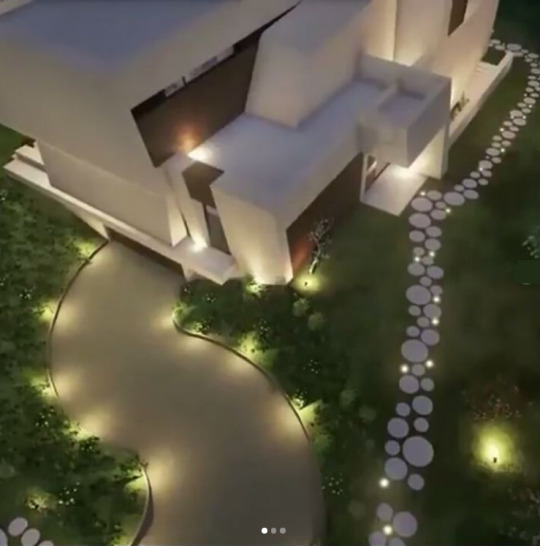
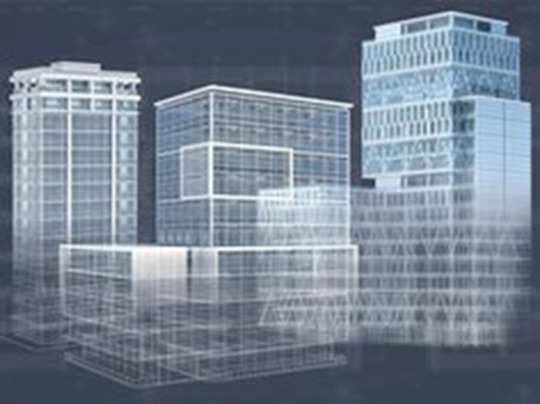
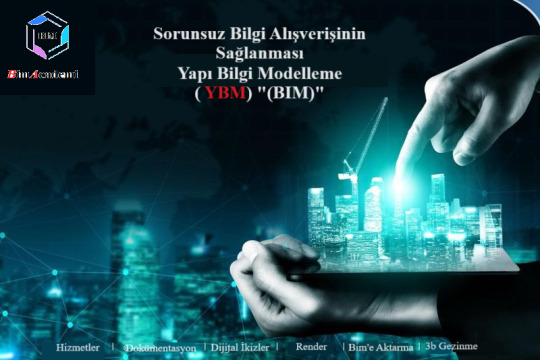
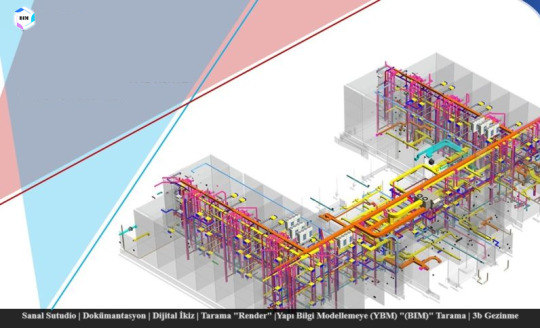
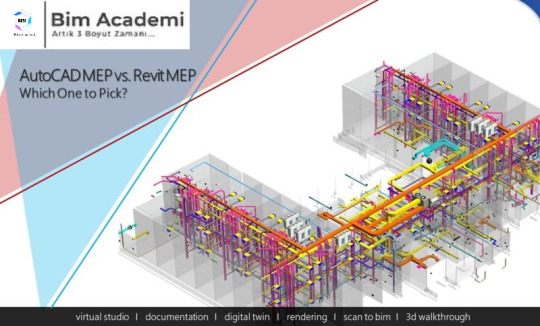



#yapıbilgimodelleme
1 note
·
View note
Text
Explore the transformative future of Quantity Surveying with PEJA Surveying. Delve into how technology, sustainability, and collaboration are redefining the QS profession. Learn how PEJA, a leading London-based firm, is at the forefront of these changes, offering expertise in innovative, sustainable project management. Partner with us to navigate the evolving construction landscape.
#Quantity Surveying#Future Trends in QS#PEJA Surveying#Sustainable Construction#Building Information Modelling#QS Technology Innovations#London Quantity Surveyors#Construction Industry Future#QS Professional Development#Collaborative Construction Projects
0 notes
Link
Increase in the use of AR/VR technologies and growing adoption of BIM to design green buildings is expected to drive the market growth in upcoming years...
0 notes
Link
0 notes
Text
Tumblr keeps popping up to sell me ad free dashboard. But what it doesn't understand is that me and the ads have a sort of symbiosis at this point.
The guys from the fake gameplay trailers for a predatory mobile app are my blorbos
#the kings return to do WHAT?#oh my god they put him in a situation#last year he was solving fake puzzles and this year he is shooting hordes of zombies while trying to chokse#which gate that looks like all the other gates in all the other shooting hordes of zombies games#ooh whats my little phoenix wright up to?#begging to be drooled on by a giant cyclops with gianter boobs?#hell yeah you go little pheonix knight#endure or divorce! what will she pick! blond bimbo and boo monstersinc freeze to death in the cold water#my heart will go on#after their nasty dad ate all the food! the tragedy#oh heres another trailer with that same nasty dad! hes snorkling? where is my daccoon eyed woman WHAT THE FUC#SOMEONE POURED (POOP?) INTO HIS SNORKLE THATS SO TERRIBLE#theyre running away wherre is the bimbo oh its all frozen#everythign froze so fast and now nasty dad is in a winter coat and also changed his entire physique#now hes gathering logs now hes buikding a settlement#damn guess we know what happened after the divorce!#and thats how you know the winter log game is by the same company as (one of many) repair the house game#thry got nasty dad model#and he is GOING places#if yiu ever hear 'i finally found a game that is exactly what they show in the ads!' no you didnt#i would love to play the fat guy fighting a horse for the last drop of water#hes like me fr#but hes too busy building underground rooms with the hot chick who may or may not die#SPEAKING OF HOT CHICKS i love that game where you romance a level 10 babe#not a crook or informant thats her whole job description#level 10 babe#she cqn be romanced by picking her off the ground or by showing her money (which you dont have)#but the other guy does!#i wonder what halpens to her#oh good shes upgraded to mafia wife! good for her and she has some buns in the oven too she must be so happOH NO
186 notes
·
View notes
Text
Defending Forever online is not enough I need a gun
#qsmp#he's POSSESSED#>>POSSESSED<<#IT'S NOT HIM#also this is Main Lore btw because he’s possessed by baribal aka dark Cucurucho#why him and not anyone else who got infected?#because he’s the president and baribal wants to control “their leader”#he does not have Forever's memories#the arg was @v@ tricking his conscience (us viewers) into giving it information#he gad to ask the eggs who their parents were for example#also it stated that it does not care what happens to Forever's body#the Cucurucho who we saw trying to “help” forever with the infection was actually baribal in disguise btw#which is why the infection got worse with the medication#and remember he only got infected in the first place because Cucurucho told him the eggs were in the nether and he went investigate#also stop blaming him for happy pills? Cucurucho literally kidnapped and forcefully drug him#once again because he’s president and has to be the model resident#and let the leo thing go omg it was one time six months ago#unless leo brings it up herself it has nothing to do with this!!#JESUS#and if I see one person asking who's the president now I'm gonna blow up the presidential building myself#NO ONE#THE ANSWER IS NO ONE#qsmp forever#qsmp baribal#qsmp dark cucurucho
75 notes
·
View notes
Text

Typical Detail: RC Slab Drop Panel 典型细节: 钢筋混凝土板 Drop Panel by Sonetra KETH
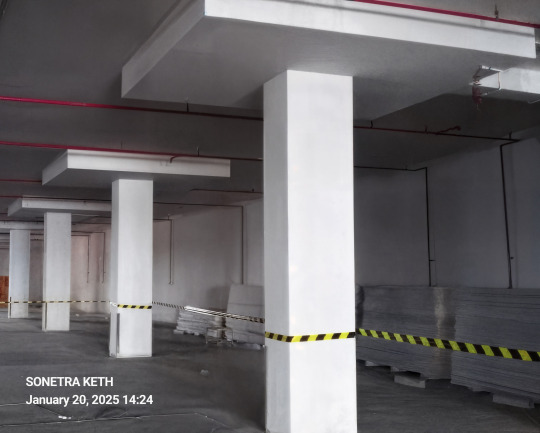
Drop panels are reinforced concrete extensions around the top of shear walls, columns, or heavily loaded areas. They are critical elements in seismic and load-resistant structural design. Slab drop panels are thickened areas around columns in flat slab construction, increasing shear strength and enabling the slab to support greater loads. This feature is typical of flat slab systems, which are two-way reinforced structures.
Drop Panels are needed because:
Shear and Moment Resistance: They enhance the capacity of vertical structural elements (shear walls or columns) to resist bending moments and shear forces, especially at the critical junctions (e.g., wall-column interfaces).
Reduce Stress Concentrations: Drop panels distribute concentrated shear and axial loads more evenly into the foundation or diaphragm, preventing stress concentrations and potential structural failure.
Increase Structural Rigidity and Stability: They improve the overall stiffness and robustness where high load or seismic forces are expected, especially in high-rise or seismic zones.

Typical Detail: Column-Slab Section Views 典型细节: 钢筋混凝土柱和板 剖面图 by Sonetra KETH
Much engineering judgment is required to reach a sound conclusion on the allowable movements that can be safely tolerated in a tall building. Several factors need to be taken into account. These are:
Type of framing employed for the building
Magnitude of total as well as differential movement
The rate at which the predicted movement takes place
Type of movement, whether the deformation of the soil causes tilting or vertical displacement of the building
Every city has its own particular characteristics regarding the design and construction of foundations for tall buildings, which are characterized by the local geology and groundwater conditions. Their choice for a particular project is primarily influenced by economic and soil conditions, and even under identical conditions, it can vary in different geographical locations. In this section, a brief description of two types, namely, the pile and mat foundations, is given, highlighting their practical aspects.
Sonetra KETH (កេត សុនេត្រា) •Architectural Manager, Project Manager, BIM Director •建築師經理, 專案經理, BIM總監 •Giám đốc kiến trúc, Giám đốc dựán, Giám đốc BIM •RMIT University Vietnam + Institute of Technology of Cambodia
#Sonetra Keth#Architectural Manager#Architectural Design Manager#BIM Director#BIM Manager#BIM Coordinator#Project Manager#RMIT University Vietnam#Real Estate Development#Construction Industry#Building Information Modelling#BIM#AI#Artificial Intelligence#6th Annual BIM Summit#Technology#VDC#Virtual Design#IoT#Khmer BIM#Machine Learning#C4R#Collaboration for Revit#NETRA#netra#នេត្រា#កេត សុនេត្រា#crossorigin=“anonymous”></script>#<meta name=“google-adsense-account” content=“ca-pub-9430617320114361”>#<script async src=“https://pagead2.googlesyndication.com/pagead/js/adsbygoogle.js?client=ca-pub-9430617320114361”
1 note
·
View note
Text
DIGITAL TECHNOLOGIES that enhance coordination for real estate developers
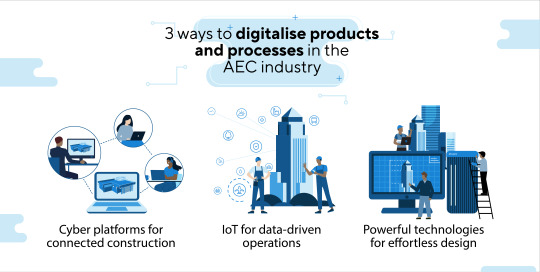
In the 21st century, the Architecture, Engineering, and Construction (AEC) industry has seen a rapid evolution with the adoption of new digital technologies that enhance coordination and integration among project stakeholders for real estate developers.
As an experienced architectural manager with a Master's Degree in Architecture, an Architectural Engineering degree, and expertise in BIM processes from reputable institutions, here are some key technologies that can be effectively utilized within the organization:
1. Building Information Modeling (BIM): According to ISO 19650, Building Information Modeling (BIM) is a collaborative process that utilizes digital information to create a shared knowledge resource for the design, construction, and operation of built assets, such as buildings and infrastructure. BIM involves the generation and management of digital representations of the physical and functional characteristics of a facility. These digital representations form a reliable basis for decision-making throughout the asset lifecycle, from initial planning and design through construction, operation, and maintenance.
BIM is a 3D modeling technology that enables stakeholders to create, collaborate, and manage building design and construction information in a digital environment.
BIM facilitates better coordination, clash detection, visualization, and data sharing among architects, engineers, contractors, and clients throughout the project lifecycle.
2. Virtual Design and Construction (VDC): Virtual Design and Construction (VDC) is a methodology that utilizes digital technologies, such as Building Information Modeling (BIM), 3D modeling, simulation, and visualization tools, to create virtual representations of construction projects. VDC integrates design, construction, and project management processes to improve collaboration, coordination, and decision-making throughout the project lifecycle. In VDC, project teams use virtual models to simulate and analyze construction processes, identify potential conflicts or issues, optimize project sequencing, and visualize the final built environment before construction begins. By leveraging advanced digital tools and techniques, VDC enables stakeholders to explore design alternatives, evaluate construction methods, and enhance project outcomes in a virtual environment.
VDC uses 3D modeling, simulation, and visualization tools to plan, design, and construct buildings virtually before physical construction begins.
VDC enhances coordination, reduces errors, improves communication, and enables stakeholders to make informed decisions early in the project.
3. Augmented Reality (AR) and Virtual Reality (VR):
AR and VR technologies provide immersive experiences that allow stakeholders to visualize and interact with digital models in a realistic and interactive way.
AR and VR enhance stakeholder engagement, design review processes, client presentations, and construction planning by offering a more intuitive and immersive experience.
4. Drones and UAVs:
Drones and Unmanned Aerial Vehicles (UAVs) are used for aerial surveys, site inspections, progress monitoring, and data collection in construction projects.
Drones provide real-time data, aerial imagery, and 3D mapping that improve project visibility, safety, and decision-making for stakeholders.
5. Internet of Things (IoT):
IoT technologies connect physical devices and sensors to the internet, enabling real-time monitoring, data collection, and analysis of building systems and construction processes.
IoT enhances building performance, energy efficiency, maintenance management, and occupant comfort by providing valuable insights to stakeholders.
6. Cloud Computing and Collaboration Platforms:
Cloud-based platforms enable stakeholders to store, share, and collaborate on project data and documents in a centralized and secure environment.
Cloud computing enhances communication, document management, version control, and access to real-time project information for all stakeholders.
7. Artificial Intelligence (AI) and Machine Learning (ML):
AI and ML technologies analyze large datasets, optimize workflows, automate repetitive tasks, and provide predictive insights to stakeholders in the AEC industry.
AI and ML improve decision-making, risk management, cost estimation, and project performance by leveraging data-driven intelligence.
By leveraging these new digital technologies, real estate developers and project stakeholders... can enhance coordination, collaboration, and integration in AEC projects, leading to improved efficiency, productivity, and project outcomes in the 21st century.
Sonetra KETH (កេត សុនេត្រា) Architectural Manager, Project Manager, BIM Director 建築師經理, 專案經理, BIM總監 Giám đốc kiến trúc, Giám đốc dựán, Giám đốc BIM RMIT University Vietnam + Institute of Technology of Cambodia
#Sonetra Keth#Architectural Manager#Architectural Design Manager#BIM Director#BIM Manager#BIM Coordinator#Project Manager#RMIT University Vietnam#Institute of Technology of Cambodia#Real Estate Development#Construction Industry#Building Information Modelling#BIM#AI#Artificial Intelligence#Digitalization#Technology#VDC#Virtual Design#IoT#Internet of Things#Machine Learning#Drones and UAVs#C4R#Collaboration for Revit#Cloud Computing and Collaboration Platforms#<meta name=“google-adsense-account” content=“ca-pub-9430617320114361”>#crossorigin=“anonymous”></script>#<script async src=“https://pagead2.googlesyndication.com/pagead/js/adsbygoogle.js?client=ca-pub-9430617320114361”#<meta name=“monetag” content=“07e99e76c61091cfc8c3590b90f57e37”>
0 notes
Text
Best BIM Tools in 2025 and Selecting the Right BIM Software

BIM is a comprehensive approach in the AEC realm, and its applications and tools hold a significant position. It is vital to choose the right BIM software for project requirements, coordination, and efficiency. Here’s a detailed, curated list of the best BIM software and key factors for selecting it.
#bim modeling services#3d bim services#mep shop drawings#building information modeling#interior visualization#clash detection#revit families creation#3d cad drawings#shop drawing services#bim company#top bim software#best bim tools
2 notes
·
View notes
Text

Building Information modeling (BIM) is an clever software program modeling procedure that engineers, contractors, and designers can use to collaborate on a building’s layout, construction, and operation. It’s extra than just a version. It’s a method of gathering and handling facts at some stage in a building’s whole existence cycle.
BIM encompasses not simplest geometry and spatial relationships, however it also files constructing features, together with unique statistics about the sort of materials used, the quantity used, and the way the ones characteristics effect the building as a whole. BIM may be thought of as a database of facts ranging from task substances and cost – to the 3D version after construction – to operation of the facility. This records may be used to actively control a task each step of the way.
2 notes
·
View notes




